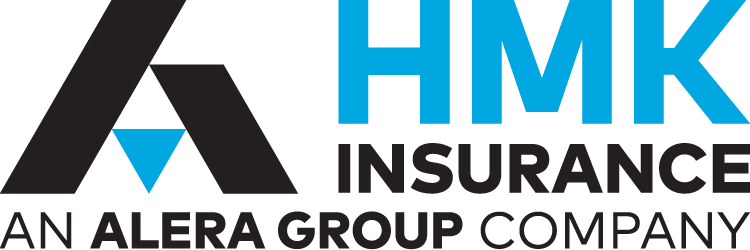 More than 50 years ago, the OSH Act went into effect, promising every worker the right to a safe job. Hundreds of thousands of workers can say their lives have been saved since 1970. Workplace safety and health conditions have improved significantly during this time. Yet, many workers are still affected by life-changing injuries and events at the workplace.
More than 50 years ago, the OSH Act went into effect, promising every worker the right to a safe job. Hundreds of thousands of workers can say their lives have been saved since 1970. Workplace safety and health conditions have improved significantly during this time. Yet, many workers are still affected by life-changing injuries and events at the workplace.
What we view as workplace hazards and risks has broadened. The concern is not only being physically injured in the scope of work but also threatening interactions with fellow workers and the harm to one’s mental health and stress level. Companies’ risk management and safety programs need to look deeper at employees to overcome and prevent these challenges.
We currently have work environments that could potentially have up to five generations of workers. These generational differences alone can cause stress in the workforce. Some other current workplace challenges include employee shortage, an aging workforce, high turnover, economic turmoil, and more. All these challenges increase stress and distractions which can lead to injury or violent incidents.
The U.S. Bureau of Labor and Statistics recently published data on workplace violence reporting on homicides and nonfatal intentional injuries by another person in 2020 and 2021. There were 392 workplace homicides in 2020 and 481 workplace homicides in 2021. Violence and other injuries by persons or animals continue to be one of the top five causes of workplace fatalities.
The FBI recently published an article on www.fbi.gov showing an increase in active shooter incidents. For the period of 2017-2021, active shooter incidents in the US reveal an upward trend; 2021 represents a 52% increase in active shootings from 2019 and a 96% increase from 2017.
Stress can be harmful to our physical health and increase mental health challenges. This can result in clinical mental illness and substance use disorders which can significantly alter work performance and safety of job operations. Stress can also manifest as other conditions like grief, sadness, or anxiety. Some of these feelings are temporary and often not part of a diagnosable condition but can equally impact workers in their day-to-day lives. While there are many things in life that induce stress, work can be one of those primary factors. Workplaces can also be a key place for resources, solutions, and activities designed to improve mental health and well-being.
What Can We Do? As an employer or leader, you can do more than you think. We need to begin to consider an employee’s total health. A recent article in Safety+Health Magazine (April 2023), a National Safety Council publication, stated managers have a big influence on workers’ overall health. They conducted a survey of 22,000 workers and managers which found 3 out 5 employees stated that their job has the biggest influence on their overall mental health and 69% said their manager plays the largest role – equal to a spouse/partner. Managers were cited more often than a doctor (51%) or therapists (41%).
With managers and supervisors wielding such profound influence over employees working under them, we need to consider the accountability system in place. Do you have any metrics to benchmark managers’ performance in your safety programs? A good supervisor accountability or leadership program is extremely helpful.
Many organizations are leading initiatives that focus on this critical topic, Total Human Health.. Employers need to increase attention not only to the body but to the heart and mind health of their workers as this strongly relates to workplace safety.
It takes little effort or action to make someone feel human. An important part of building a culture of safety is holding and encouraging conversations with your team. Create an environment of open communication. Consider leadership training on mental wellness, employee surveys, employee appreciation events, and any other activity which promotes getting to know your employees. The more employees know you care, the more they will be engaged. One of the most important things organizations and leaders do to retain a highly engaged workforce is to show concern for their employees. You can’t buy that in a box on Amazon, it’s often free:
Some examples of activities you can do to become more engaged with employees include:
- Offer Counseling
- Hold a walking meeting.
- Reward employees with a healthy lunch
- Celebrate special events (birthdays, etc.)
- Build time for employees to volunteer.
- Provide stress reduction support; manage workloads, encourage time off, and open
communication about challenges.
Does your organization have a program designed to help employees focus and improve their health, wellness, and livelihood? Having an employee assistance program and handing out mental health pamphlets is only scratching the surface. Consistent action is what is needed.
Why It Matters. Employees with healthy emotional wellness feel confident, in control of their feelings and behaviors, and are able to handle challenges and complex problem-solving. Employees who have a sense of belonging in the workplace are more engaged in the work they are performing. Promoting physical wellness creates habits in employees like regular physical activity, healthy nutrition, and adequate sleep. Supporting spiritual wellness by advocating volunteering, self-reflection, meditation, prayer, or spending time outdoors will foster the values and beliefs of those on your team. The mind (financial, intellectual, occupational, mental, and environmental) is clearly affected by your work. Therefore, caring for the mind in the workplace must become a priority.
When you begin to manage the “total human” and create a psychologically safe work environment, you will improve the most important part of safety, the human.
While it may be easier to focus on tasks and deadlines, focusing on team dynamics, supervisor engagement, and employee wellness may just be the key to a more safe, productive, and enjoyable working life.
Be Mindful
About the Author
Todd Fox
Director of Risk Management
HMK Insurance, an Alera Group Company
Contact Information:
- tfox@hmk-ins.com
- (610) 868-8507





